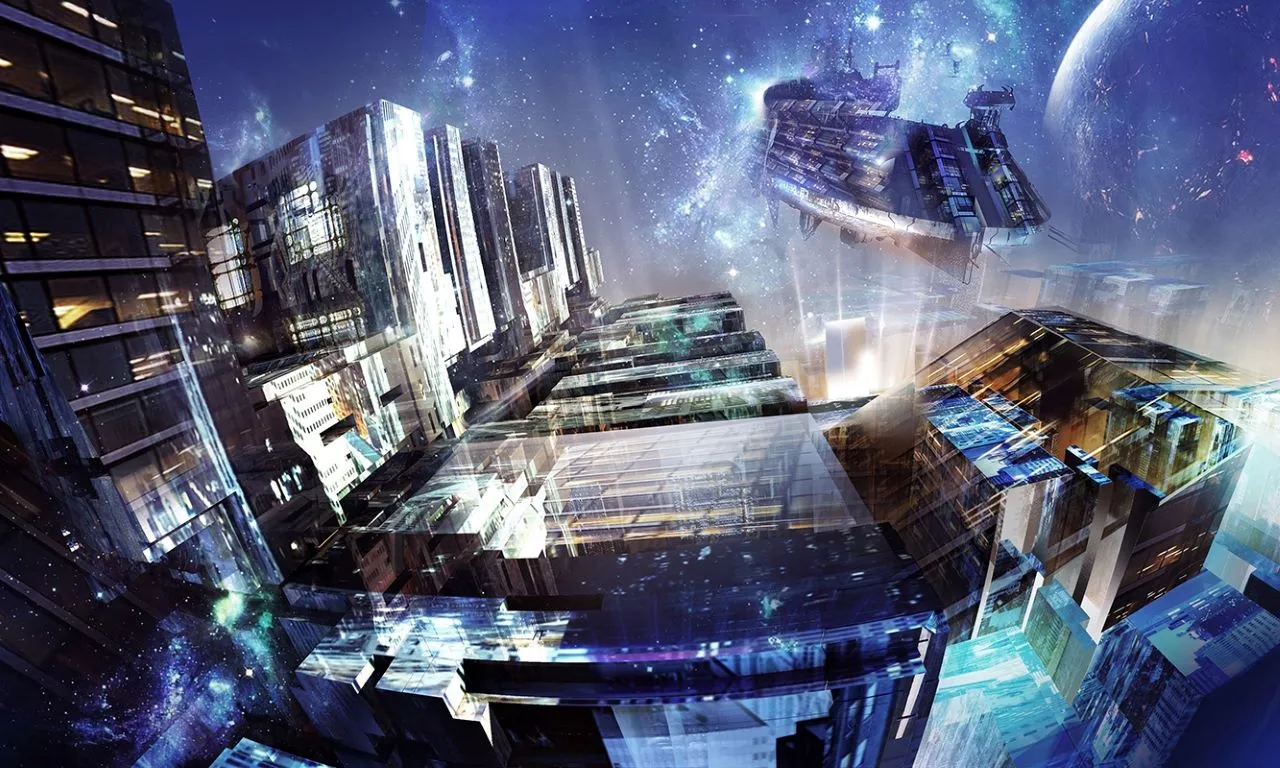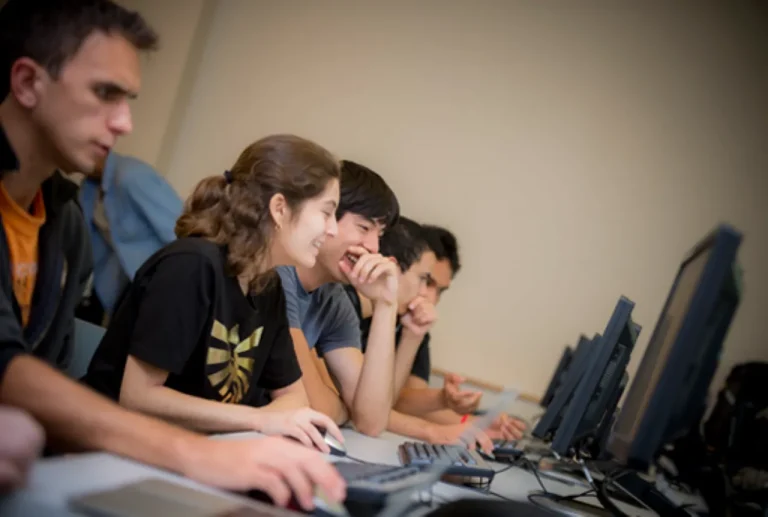The Relationship Between Science Fiction And Dystopia
Science fiction has long been used to portray grim visions of the future and warn against the misuse of technology and power. This bleak imagining of society gone wrong is known as dystopia.
If you’re short on time, here’s a quick answer to your question: There is a strong relationship between science fiction and dystopia. Many iconic works of sci-fi depict dystopian settings caused by factors like totalitarian states, environmental disaster, or technology run amok.
In this in-depth article, we’ll explore the close ties between science fiction literature and dystopian themes, why they emerged, major dystopian subgenres in sci-fi, and famous examples from books, movies and TV shows.
Defining Dystopia and Its Relation to Sci-Fi
Dystopia is a term often used in literature and film to describe a society or world that is characterized by suffering, oppression, and a lack of freedom. It is the opposite of a utopia, which is a perfect and idealized society.
Dystopian narratives often explore the darker aspects of human nature and the consequences of unchecked power and control.
Meaning of dystopia
Dystopia, derived from the Greek words “dys,” meaning “bad” or “abnormal,” and “topos,” meaning “place,” can be understood as a “bad place” or an undesirable society. In dystopian stories, the setting is usually a future world or an alternative reality where societal structures have crumbled, and individuals are subjected to various forms of oppression.
How dystopia differs from utopia
While dystopias and utopias are opposites, they share a common theme of exploring societal ideals. However, a utopia presents a vision of a perfect society, where everything is ideal and harmonious. In contrast, a dystopia portrays a society that has gone awry, highlighting its flaws and the potential consequences of certain societal choices or ideologies.
Dystopian narratives often serve as cautionary tales, warning us about the dangers of unchecked power and the erosion of individual freedoms.
Why science fiction lends itself to dystopian visions
Science fiction is a genre that focuses on speculative and futuristic concepts, often exploring the impact of technology, societal changes, and scientific advancements. It provides a unique platform for authors and filmmakers to envision and critique potential future societies.
Science fiction often pushes the boundaries of our imagination by presenting scenarios that may seem far-fetched but are rooted in current social, political, and technological trends.
Dystopian visions are a natural fit within the science fiction genre because they allow creators to examine the potential consequences of current societal issues taken to the extreme. They provide a lens through which we can reflect on our own world and the direction it may be heading.
By extrapolating current trends, science fiction writers and filmmakers can explore the impact of unchecked power, environmental degradation, or social inequality on humanity.
The relationship between science fiction and dystopia is a rich and complex one. It allows us to explore the human condition, question our values, and contemplate the potential consequences of our actions.
Through dystopian narratives, we are challenged to consider the choices we make as a society and the impact they have on our future.
Origins and Evolution of Dystopian Science Fiction
Dystopian science fiction has a long and fascinating history, with its roots dating back to some influential early novels. These novels, such as George Orwell’s “1984” and Aldous Huxley’s “Brave New World,” laid the foundation for the genre by exploring the dark and oppressive future societies.
These works of fiction not only captivated readers but also served as a warning about the potential dangers of unchecked power and totalitarianism.
Influential early dystopian novels
George Orwell’s “1984” is perhaps one of the most well-known and influential dystopian novels of all time. Published in 1949, it depicted a totalitarian society where individual freedom and privacy were stripped away, and Big Brother watched over every aspect of people’s lives.
This novel not only painted a bleak picture of the future but also raised important questions about surveillance, propaganda, and the manipulation of truth.
Aldous Huxley’s “Brave New World,” published in 1932, presented a different kind of dystopia. In this novel, society is controlled through genetic engineering, mass production, and the use of a drug called soma that keeps the population docile and content.
Huxley’s vision of a society that sacrifices individuality and freedom for stability and happiness challenged readers to reflect on the costs of a utopia built on conformity and control.
Impact of technological advancement
As technology advanced, so did the themes and concerns explored in dystopian science fiction. The rise of computers, artificial intelligence, and surveillance technologies sparked new fears and possibilities for dystopian narratives.
Authors like Philip K. Dick and William Gibson delved into the complexities of a future where humanity’s relationship with technology becomes increasingly blurred and precarious.
In recent years, the rapid developments in AI and automation have further fueled the imagination of dystopian authors. They explore themes of job displacement, loss of human connection, and the ethical implications of creating machines that can surpass human intelligence.
These narratives serve as cautionary tales, urging society to consider the potential consequences of unchecked technological progress.
Role of 20th-century totalitarianism
The rise of totalitarian regimes in the 20th century, such as Nazi Germany and Soviet Union, deeply influenced the development of dystopian science fiction. Authors like Ray Bradbury and Margaret Atwood drew inspiration from these historical events to create chilling visions of societies where individual freedom and human rights are suppressed.
Ray Bradbury’s “Fahrenheit 451,” published in 1953, depicts a future where books are banned and burned, and critical thinking is discouraged. The novel serves as a warning against censorship and the dangers of a society that suppresses knowledge and independent thought.
Margaret Atwood’s “The Handmaid’s Tale,” published in 1985, explores a near-future where women are subjugated and reproductive rights are controlled by a totalitarian regime. This powerful novel highlights the importance of gender equality and the dangers of extreme religious ideologies.
New concerns like climate change and AI
As the world grapples with new challenges like climate change, the themes of dystopian science fiction have expanded to include ecological disasters and their impact on society. Novels like Paolo Bacigalupi’s “The Water Knife” and Kim Stanley Robinson’s “New York 2140” imagine a future where climate change has ravaged the planet, leading to political instability and social upheaval.
Artificial intelligence and its potential consequences have also become a popular focus in contemporary dystopian science fiction. Works like Emily St. John Mandel’s “Station Eleven” and Blake Crouch’s “Recursion” explore the ethical implications of advanced technology and the blurred boundaries between reality and simulation.
Major Subgenres of Dystopian Sci-Fi
Post-apocalyptic wastelands
One of the most common subgenres of dystopian science fiction is the portrayal of post-apocalyptic wastelands. These stories often depict a world devastated by a catastrophic event, such as a nuclear war, pandemic, or natural disaster.
In these desolate landscapes, survivors must navigate through the ruins of civilization, facing challenges like scarcity of resources, lawlessness, and the constant threat of danger.
Oppressive totalitarian regimes
Another prevalent subgenre of dystopian sci-fi focuses on oppressive totalitarian regimes. These stories portray societies governed by authoritarian rulers who maintain strict control over every aspect of people’s lives.
Citizens live under constant surveillance, restricted personal freedoms, and often face harsh punishments for disobedience. Examples of this subgenre include George Orwell’s “1984” and Margaret Atwood’s “The Handmaid’s Tale.”
Rampant corporate control
In dystopian sci-fi that explores rampant corporate control, powerful corporations have taken over the world, exerting immense influence over governments and society. These stories often depict a future where corporations prioritize profit above all else, leading to exploitation of resources, inequality, and the erosion of individual rights.
Films such as “Blade Runner” and novels like Neal Stephenson’s “Snow Crash” delve into this subgenre.
Technology run amok
Technology run amok is another intriguing subgenre of dystopian sci-fi. These stories envision a future where advanced technology becomes a source of danger and threatens humanity. Whether it’s sentient AI, genetic engineering gone wrong, or virtual reality addiction, these narratives explore the unintended consequences of our technological advancements.
Books like Aldous Huxley’s “Brave New World” and movies like “The Matrix” fall into this category.
Environmental and climate disaster
In recent years, dystopian sci-fi has increasingly focused on environmental and climate disasters. These narratives paint a grim picture of a future where human actions have led to catastrophic consequences, such as rising sea levels, extreme weather events, and resource depletion.
Books like Paolo Bacigalupi’s “The Water Knife” and movies like “Snowpiercer” tackle the urgent issue of climate change and its impact on society.
Notable Examples in Literature and Media
1984 by George Orwell
One of the most iconic examples of the relationship between science fiction and dystopia is George Orwell’s 1984. Published in 1949, it depicts a totalitarian society ruled by Big Brother, where individualism is suppressed and surveillance is omnipresent.
Orwell’s novel continues to be relevant today, serving as a chilling warning of the potential dangers of government control and manipulation.
Brave New World by Aldous Huxley
Aldous Huxley’s Brave New World, published in 1932, presents a different vision of dystopia. In this novel, society is controlled through genetic engineering, mind-altering drugs, and the suppression of emotions.
Huxley’s exploration of a world where individuality is sacrificed for stability and happiness raises thought-provoking questions about the nature of humanity and the pursuit of utopia.
The Handmaid’s Tale by Margaret Atwood
Margaret Atwood’s The Handmaid’s Tale is a haunting dystopian novel set in a future where women are subjugated and their bodies are controlled for reproductive purposes. This thought-provoking exploration of gender oppression and religious extremism has gained renewed attention in recent years due to the critically acclaimed television adaptation.
Blade Runner film and Philip K. Dick novels
The film Blade Runner and the novels of Philip K. Dick, such as Do Androids Dream of Electric Sheep?, have become synonymous with the genre of science fiction dystopia. These works delve into the ethical and existential questions surrounding the nature of humanity and artificial intelligence.
With their futuristic settings and philosophical themes, they have left a lasting impact on both literature and cinema.
The Hunger Games books and movies
Suzanne Collins’ The Hunger Games trilogy, as well as its film adaptations, captivated audiences with its depiction of a post-apocalyptic society divided into districts and subjected to an annual televised battle for survival.
Through the eyes of protagonist Katniss Everdeen, Collins explores themes of oppression, rebellion, and the consequences of power. The success of these books and movies demonstrates the enduring appeal of dystopian narratives.
Black Mirror TV series
The Black Mirror TV series, created by Charlie Brooker, has gained a cult following for its dark and thought-provoking exploration of the potential consequences of technology on society. Each episode stands alone, presenting a different dystopian future that often serves as a cautionary tale.
Through its examination of themes such as social media, artificial intelligence, and virtual reality, Black Mirror continues to push the boundaries of traditional storytelling.
Conclusion
Dystopian themes have been prevalent in science fiction from its early days, serving as thought-provoking cautionary tales. The flexibility of sci-fi allows it to reflect contemporary fears about totalitarianism, technology, climate change, and human nature itself.
By portraying dark possible futures, dystopian science fiction aims to warn, critique current society, and reaffirm hope in humanity’s capacity to avert disaster.







